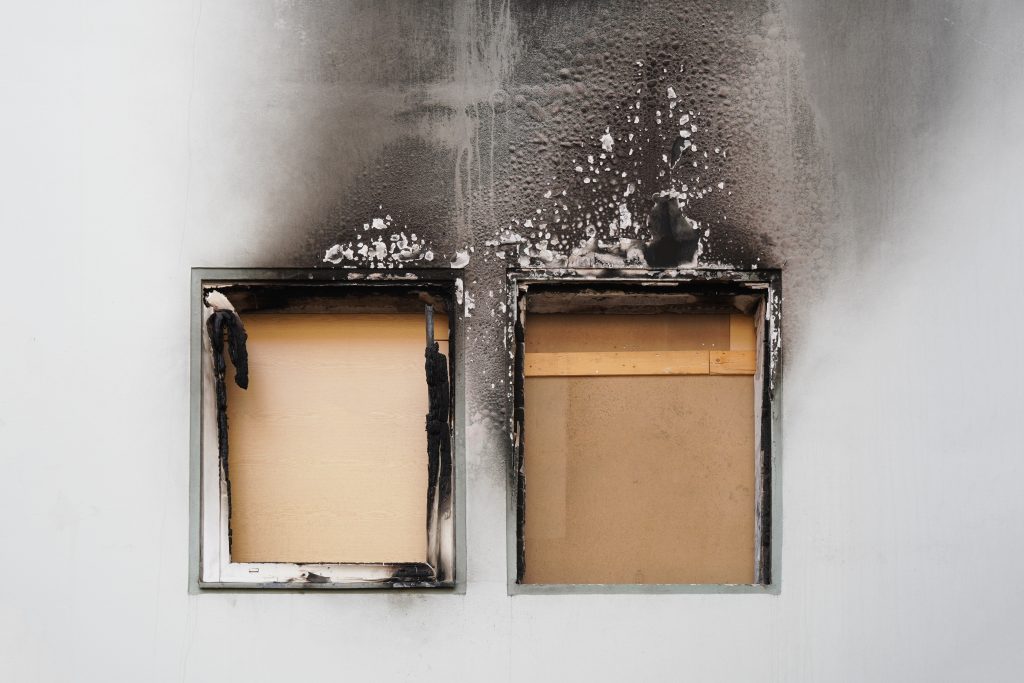Do you have thick, black stains on the walls or ceiling after a fire? Aside from charring and burn marks, soot stains are the most common sign after a fire. We look at what soot is and just how dangerous soot is.
What Is Soot?
Soot is the black, powdery particles released when things burn. It is made up of carbon, tar, and acids. Depending on what is burned, soot may also include ash, dust, oils, metal, or hazardous chemicals. During a house fire, soot can spread much further than the flames. Soot will travel in the air or even through air ducts and cause stains in other rooms.
Where Does Soot Come From?
House fires or kitchen fires are usually the biggest sources of soot. However, soot is produced when anything burns. Even burning candles, cooking, or using your fireplace releases a little bit of soot. While fires cause a lot of soot all at once, soot from candles and cooking will build up in time.
What Does Soot Look Like?
Although it depends on the source, soot usually looks like a black stain or streak. The size of the soot stain is based on the fire. The larger the fire, the larger the stain.
Soot from fires leaves thick, black stains that cling to walls and flat surfaces. However, soot from cooking and candles usually creates a thin grime or film on surfaces near the flame.
Also, not all materials release the same kind or amount of soot. Wood and other natural materials release dry, powdery soot. Whereas soot from plastics and other synthetic materials is usually oily or even sticky.
How to Tell Soot From Other Black Stains
Since soot stains are black, you can mistake it for burn marks or even mold.
Soot and burns are the hardest to tell apart since they are both caused by fires. The best way to tell them apart is to clean the area. You can wipe away soot stains, but burn marks will always stay.
While mold and soot can look similar, it’s much easier to tell them apart. Mold is always caused by water and usually looks fuzzy or hairy. Soot will usually smear when cleaning, whereas mold usually wipes away.
Does Soot Smell?
Soot usually has a burnt smell, but it can also trap odors released during the fire. For example, burnt plastics smell like chemicals or solvents while odors from food can range from savory to rancid. Smells from different materials can combine to form extremely foul or even putrid odors.
Is Soot Dangerous After a Fire?
Since it releases acids and other chemicals, large amounts of soot can be dangerous to both your home and your health.
In your home, the biggest risk from soot is cosmetic damage. If you don’t clean up soot properly, it can leave permanent stains in a matter of hours after a fire. Because soot is acidic, stains can show through paint over time
Although unlikely, soot can pose a health risk as well. The particles are very tiny, so it’s easy to inhale them. This can cause breathing problems and aggravate asthma and other respiratory illnesses.
Since soot traps in odors, it can cause headaches or other symptoms if you are sensitive to smells or have respiratory conditions
In rare cases, soot can contain toxic chemicals and extended exposure can lead to severe health risks.
Do you have smoke or soot damage in your home after a fire? Call 1-888-443-3110 now for 24-hour emergency service and a free quote on soot damage cleanup.





